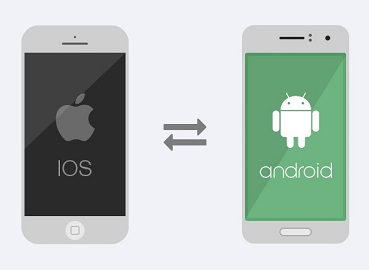Android vs iOS: A Comprehensive Comparison
By Bhavya Sharma
Introduction
Google’s Android and Apple’s iOS are the two leading operating systems in the mobile technology world, commonly used in smartphones and tablets. Choosing the right platform is essential as switching from one operating system to another will require repurchasing apps. This article will provide a comprehensive comparison of Android and iOS, highlighting their similarities, differences, and unique features.
User Interface and Design
Android and iOS share many similarities in their user interface, such as touch interfaces, homescreens, and status bars. However, Android’s interface and basic features are generally more customizable from top to bottom than iOS, which has a more uniform design. Android allows the use of widgets for auto-updating information, while iOS offers a dock for frequently used apps.
Features and Upgrades
Android is used by various phone manufacturers, while iOS is exclusive to Apple devices. Google Play offers over 1 million apps for Android devices, while the Apple App Store has about 1.8 million apps, with approximately 30% available for the iPad. iOS users generally receive upgrades more consistently than Android users, who depend on phone manufacturers and carriers for updates.
Performance & Hardware
Apple’s A-series chips provide a roughly two-year lead over the best Android phones, resulting in better performance and energy efficiency. In terms of stability, Android KitKat has been ranked more stable than iOS 7.1.
Messaging & Communication
Both platforms offer similar messaging and communication features. However, Android allows users to log onto GTalk for instant messages, while iOS does not have a native way to chat to non-Apple users. iOS includes Siri, a voice-based virtual assistant, while Android offers Google Now.
Special Features
iOS users benefit from seamless software upgrades, with new versions available for devices as old as the iPhone 6S. Android updates, however, depend on phone manufacturers and carriers, which may not offer upgrades for all devices or may delay the process.
In terms of virtual assistants, iOS uses Siri, while Android offers Google Now. Both assistants can handle dictation, spoken commands, and various tasks, but Siri includes additional features like reading sports scores and making reservations.
For mobile payments, Android uses Google Wallet, while iOS uses Apple Pay. Both systems support NFC payments, but Apple Pay’s integration with fingerprint identification makes it easier to use.
Conclusion
When comparing Android and iOS, it's essential to consider your priorities, such as customizability, user interface, app selection, hardware compatibility, and special features. Both platforms have their advantages and disadvantages, so choosing the right one depends on your personal preferences and needs.

